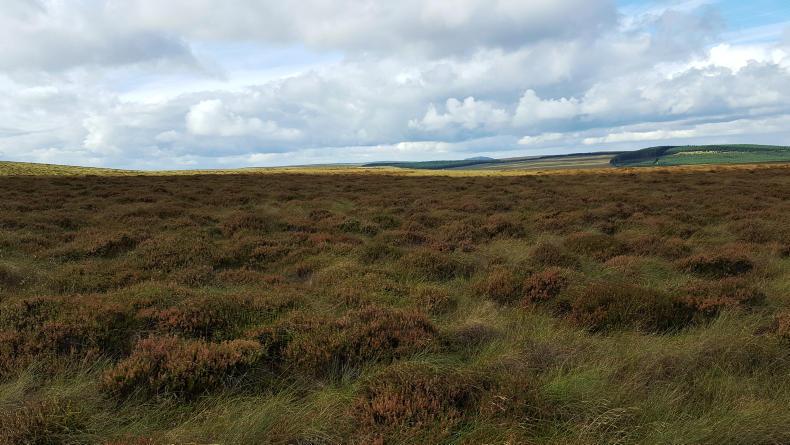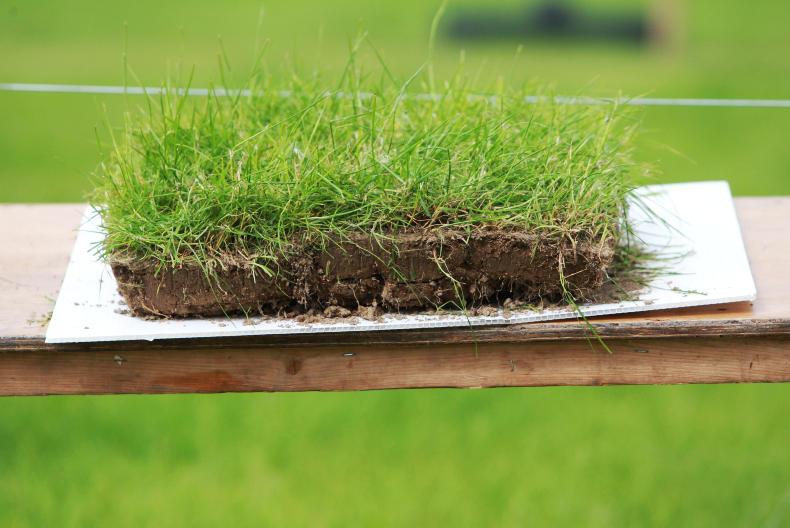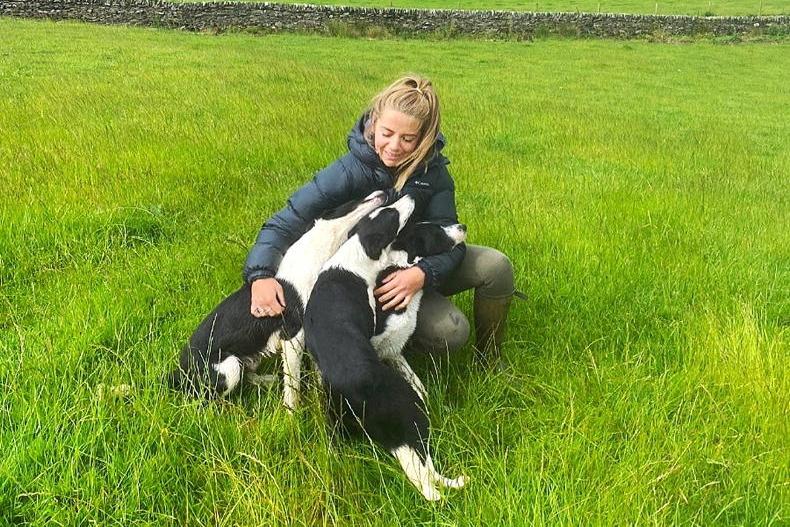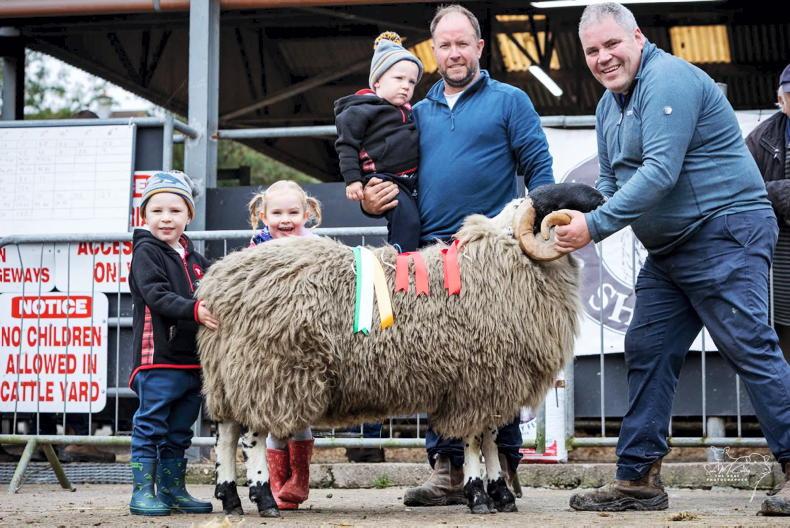Heather in heathland and bog needs to be properly managed to deliver maximum possible productivity from livestock, to provide a suitable habitat for wildlife, and to have land in eligible condition for EU payment schemes.
Speaking to around 60 farmers at an event at the CAFRE hill farm in Glenwherry last week, Eileen McCloskey from CAFRE said that heather is a semi-natural habitat, which is in optimum nutritional condition when it is short with green shoots.
If heathland and bog are not grazed, heather will eventually mature into a degenerative state where it is tall and woody. Heather grows in heathland which forms on peat deposits of under 0.5m deep and in bogland which forms on over 0.5m of peat.
Eileen said that by grazing sheep in a low-input system on heather, land can be kept in good condition and an agricultural output can be produced. “There is still a resource here that will grow something that can be sold in a minimal input system. If this type of land is then managed well, it will tick the box for land eligibility also,” she said.
Eligible
For land to be eligible for schemes such as Basic Payment, Areas of Natural Constraint and the Northern Ireland Countryside Management Scheme, it has to be maintained in good agricultural and environmental condition. In the case of heather, DAERA states that it must be used for agricultural purposes (grazed by livestock and/or managed by burning or flailing), be accessible to grazing livestock and have significant forage value to be eligible.
If heather is over 50cm tall it is defined as over mature, inaccessible to livestock and therefore ineligible for EU payment schemes.
Where there is a mosaic of eligible and ineligible heather in a field, DAERA rules state that a maximum of 20% of heather over 50cm in height is allowed for the whole heather block to be claimed. If there is over 20% mature heather in the block, then the mature heather must be deducted from the claim.
Regenerate
Flailing can be carried out to regenerate mature heather. At last week’s event, a demonstration involved a Quad X Power Shredder. The machine is trailed behind a quad and has an independent petrol engine. Flailing with a mulcher or mower on a tractor can also be done, but wet conditions meant that ground would not carry a tractor last week.
Where the heather is in a more degenerative state, controlled burning can be the best option. Burning cannot be carried out between 15 April and 31 August and consent from the NI Environment Agency (NIEA) is required for burning or flailing heather on environmentally designated sites. Burning is permitted on heathland but not on blanket bog.
Richard Moore from the NIEA said that if burning is undertaken frequently, heather becomes dominant and the amount of sedges and grasses also increase. However, this means that the proportion of sphagnum and other species decreases, which has detrimental effect on the habitat.
Rotation
Therefore, DAERA recommends that burning or flailing takes place in a 20-year rotation. Heather burning should ideally be shallow with as little damage as possible to the underlying vegetation.
A maximum of 20% of a heather block in a field is allowed to be burned or flailed each year. If the activity covers more than 20% of a heather block, then the entire area which was burned or flailed is ineligible. Where an excessive amount is accidently burned or flailed, then a force majeure form should be filled out to avoid penalties during a cross-compliance inspection.
Farmers in the NI Countryside Management Scheme were reminded that their scheme agreements may include maximum stocking rates and closed grazing periods on heather, and that a heather management plan should be agreed with DAERA before flailing or burning.
Farmers at the event in Glenwherry were advised to contact the NI Fire and Rescue Service (NIFRS) before carrying out a heather burn.
“We would rather know about it beforehand to be able to allocate resources properly if something goes wrong. If the fire does get out of control, contact us straight away. We are not coming to kick anybody, just control the fire safely,” Mark Smyth from NIFRS said.
During a demonstration at the event, members of the NIFRS showed how to set out a heather plot for burning. It involves flailing control lines around the boundary of the plot to contain the fire.
Mark said that the wind direction, wind speed, aspect of the slope (north- or south-facing) and how flammable the heather is, should be considered when predicting the movement of flames. He recommended carrying out heather burning in the morning and, if possible, before rain is forecast so that the fire is properly extinguished.
Fire break
The main fire should be started at the back of the plot and move forward with the wind. However, before lighting, a narrow strip adjacent to the flailed control line at the end of the plot should be burned to create a double fire break, and stop the main fire spreading outside the plot.
This is done by using straw to start the fire, then burning the strip backwards against the wind. Mark said that the fire should be ignited with a 70% diesel and 30% petrol mixture in a drip torch. This is a container with a pig’s tail bend in the nozzle, which is designed to stop the lighter fluid igniting. When the main fire is then started at the back of the plot in the direction of the wind, the back and the sides of the fire are controlled with beaters, such as long tail shovels. It means that no one is standing against the wind and in the way of smoke.
Mark said that the general rule is that a flame over 1.5m cannot be controlled with beaters and requires water. A knapsack of water can be used to help control flames and fully extinguish the fire when it burns out.
Grazing heather with Blackface sheep
Blackface bred sheep can maintain a wider area of heather in a nutritional and generative state, when compared to other breeds, Eileen McCloskey from CAFRE told farmers at last week’s heather management event.
She said that a two-year study at the CAFRE hill farm found that purebred Blackface ewes and Blackface Swaledale cross ewes grazed a larger area of heathland than Texel-bred ewes.
GPS tracking showed that Blackface sheep covered 85ha and up to 300m altitude, whereas the Texels covered only 26ha up to 200m.
Over the course of one day, the Blackface bred sheep, on average, covered an area of 6ha and walked 1.9km and Texel sheep covered 4.5ha by walking 1.2km. “Traditional hill type ewes have the greatest potential to manage a wider area of these habitats,” Eileen said.
Analysis of the rumen has also shown that Blackface sheep tend to have a higher proportion of heather in their diets compared with other breeds. This varies depending on the time of year. “During the summer when more grasses are available in heathland, heather will be a lower proportion of intakes,” Eileen added.














SHARING OPTIONS